Year 2
The English curriculum is built around the three interrelated strands of language, literature and literacy. Teaching and learning programs should balance and integrate all three strands. Together, the strands focus on developing students' knowledge, understanding and skills in listening, reading, viewing, speaking, writing and creating. Learning in English builds on concepts, skills and processes developed in earlier years, and teachers will revisit and strengthen these as needed.
In Year 2, students communicate with peers, teachers, students from other classes and community members.
Students engage with a variety of texts for enjoyment. They listen to, read, view and interpret spoken, written and multimodal texts in which the primary purpose is to entertain, as well as texts designed to inform and persuade. These encompass traditional oral texts, picture books, various types of print and digital stories, simple chapter books, rhyming verse, poetry, non-fiction, film, multimodal texts, dramatic performances and texts used by students as models for constructing their own work.
The range of literary texts for Foundation to Year 10 comprises Australian literature, including the oral narrative traditions of Aboriginal and Torres Strait Islander Peoples, as well as the contemporary literature of these two cultural groups, and classic and contemporary world literature, including texts from and about Asia.
Literary texts that support and extend Year 2 students as independent readers involve sequences of events that span several pages and present unusual happenings within a framework of familiar experiences. Informative texts present new content about topics of interest and topics being studied in other areas of the curriculum. These texts include language features such as varied sentence structures, some unfamiliar vocabulary, a significant number of high-frequency sight words and words that need to be decoded phonically, and a range of punctuation conventions, as well as illustrations and diagrams that support and extend the printed text.
Students create a range of imaginative, informative and persuasive texts including imaginative retellings, reports, performances, poetry and expositions.
(source: www.australiancurriculum.edu.au)
Achievement Standard
Receptive modes (listening, reading and viewing)
By the end of Year 2, students understand how similar texts share characteristics by identifying text structures and language features used to describe characters and events, or to communicate factual information.
They read texts that contain varied sentence structures, some unfamiliar vocabulary, a significant number of high-frequency sight words and images that provide extra information. They monitor meaning and self-correct using knowledge of phonics, syntax, punctuation, semantics and context. They use knowledge of a wide variety of letter-sound relationships to read words of one or more syllables with fluency. They identify literal and implied meaning, main ideas and supporting detail. Students make connections between texts by comparing content. They listen for particular purposes. They listen for and manipulate sound combinations and rhythmic sound patterns.
Productive modes (speaking, writing and creating)
When discussing their ideas and experiences, students use everyday language features and topic-specific vocabulary. They explain their preferences for aspects of texts using other texts as comparisons. They create texts that show how images support the meaning of the text.
Students create texts, drawing on their own experiences, their imagination and information they have learnt. They use a variety of strategies to engage in group and class discussions and make presentations. They accurately spell words with regular spelling patterns and spell words with less common long vowel patterns. They use punctuation accurately, and write words and sentences legibly using unjoined upper- and lower-case letters.
(source: www.australiancurriculum.edu.au)
- Plus Plan
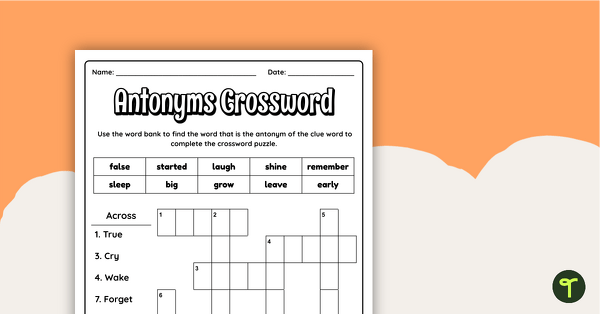
Antonyms Crossword Puzzle
Turn your language learners into vocabulary superstars with a fun antonym crossword puzzle.
- Plus Plan
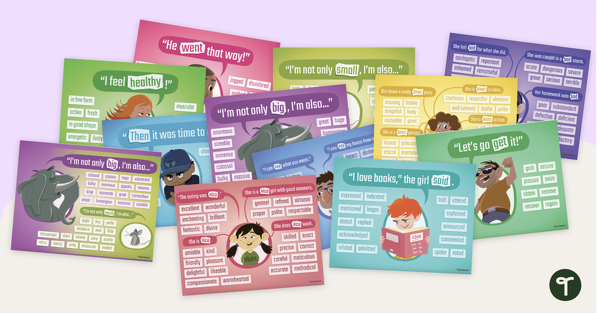
Synonyms Anchor Chart Pack
Print a pack of colourful synonym posters to boost vocabulary in the classroom!
- Plus Plan
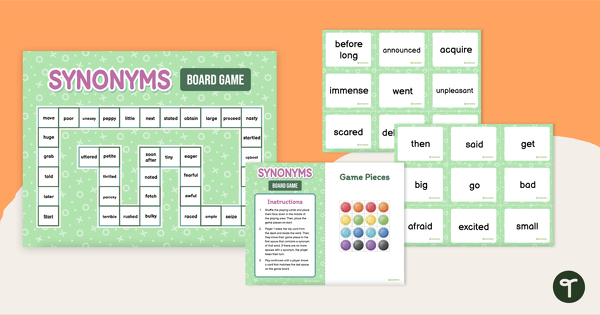
Synonyms Board Game
Practise identifying and using synonyms with a fun synonym board game.
- Plus Plan
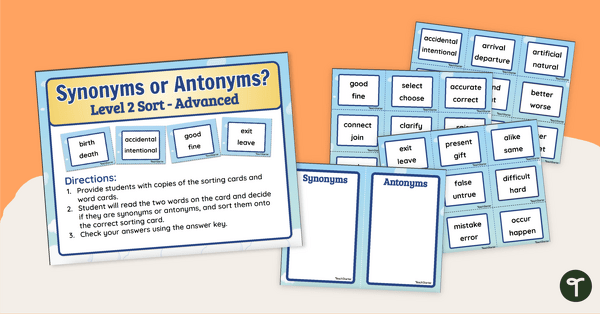
Synonyms or Antonyms? Level 2 Sorting Activity
Identify synonyms and antonyms with a sorting activity designed for upper years students.
- Free Plan

Vocabulary Builder - Synonym Worksheet
Practice synonym matching with this cut-and-paste worksheet.
- Plus Plan

Wheely Wonderful Words – Overused Verbs
Get rid of those overused verbs with a word wheel of synonyms.
- Plus Plan
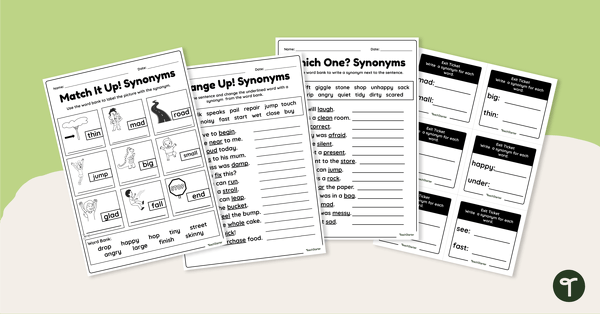
Synonym Worksheets - Year 2
Practise identifying and using synonyms with a set of four synonym worksheets for early years students.
- Plus Plan
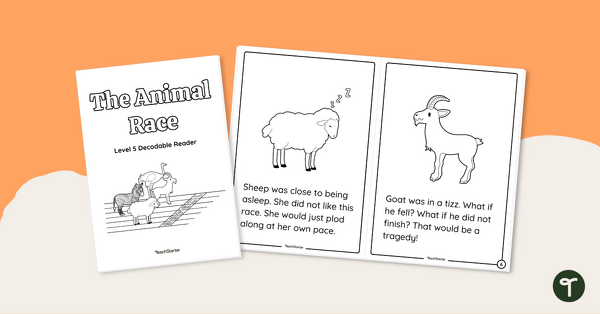
The Animal Race - Decodable Reader (Level 5)
Develop confident, successful readers with this phonics-based, printable decodable book.
- Plus Plan
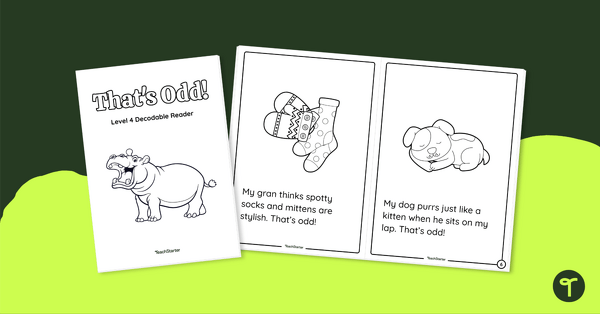
That's Odd! - Decodable Reader (Level 4)
Develop confident, successful readers with this phonics-based, printable decodable book.
- Plus Plan

Long OO Words - Word Search
Explore words containing some of the most common ‘long oo’ graphemes with this set of differentiated word searches.
- Plus Plan
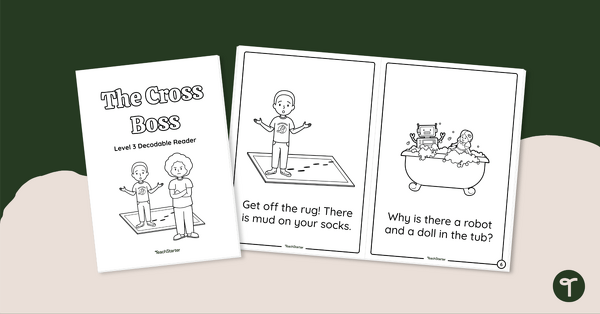
The Cross Boss - Decodable Reader (Level 3)
Develop confident, successful readers with this phonics-based, printable decodable book.
- Plus Plan
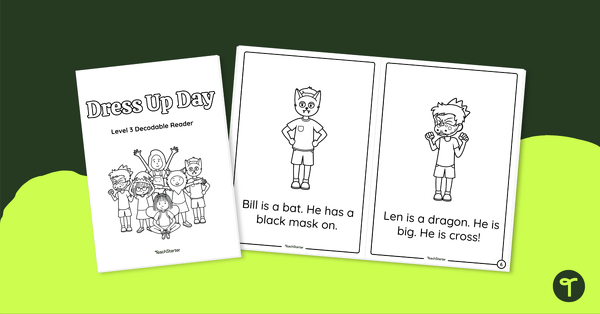
Dress Up Day - Decodable Reader (Level 3)
Develop confident, successful readers with this phonics-based, printable decodable book.
- Plus Plan
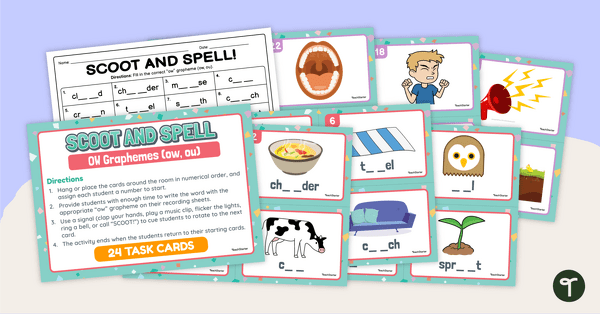
OW Graphemes - SCOOT! Task Cards
Explore words containing graphemes that make the diphthong ‘ow’ with this active classroom game that will get your students moving!
- Plus Plan
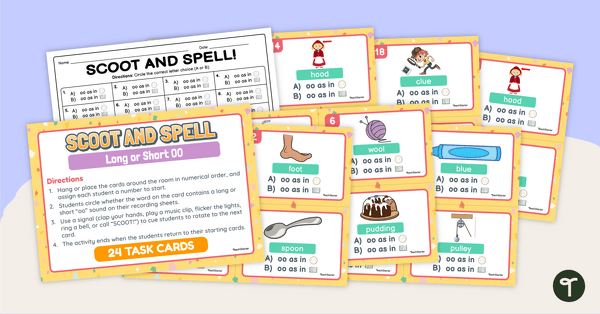
Long or Short OO? - SCOOT! Task Cards
Identify the long and short 'oo' sound in one- and two-syllable words with this active classroom game that will get your students moving!
- Plus Plan
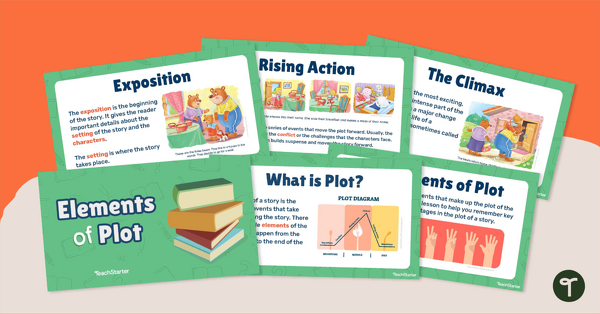
Elements of Plot Teaching Presentation
Teach your students about the elements of a story with this engaging teaching presentation.
- Plus Plan
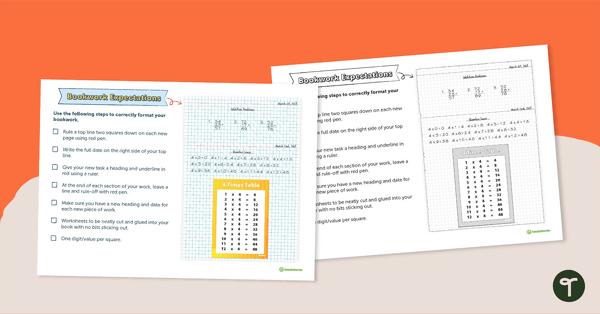
Numeracy Bookwork Expectations Posters
A checklist for students to refer to when displaying numeracy bookwork. There are low colour and black and white versions, plus editable versions in case you need to add your own expectations.
- Plus Plan
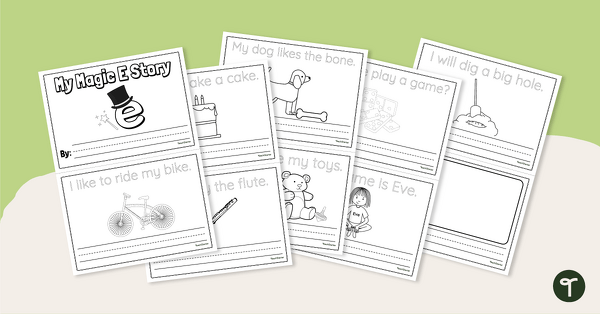
My Magic E Story - Mini-Book
Practise reading and writing sentences with CVCe words with this magic e mini-book.
- Plus Plan
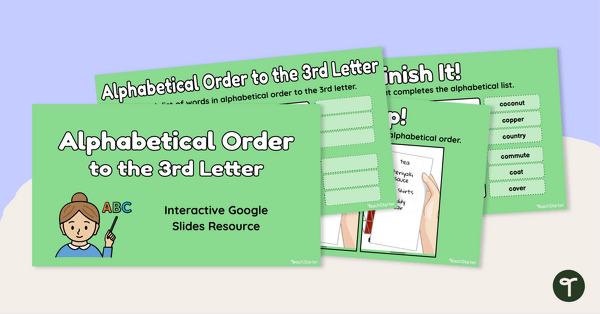
Alphabetical Order to the 3rd Letter - Interactive Activity
Practice alphabetising to the third letter with this interactive digital learning activity.
- Plus Plan
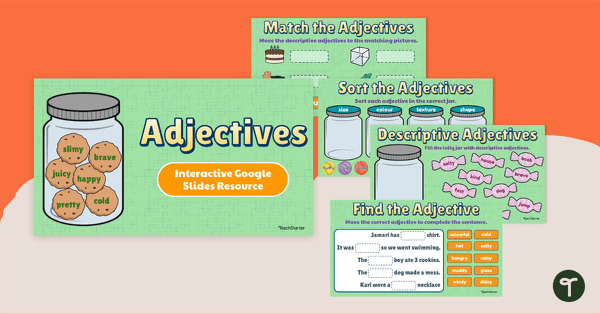
Adjectives Interactive Activity
Provide your students with engaging, interactive activities to help them improve their usage of descriptive adjectives.
- Plus Plan

Syllables Treasure Hunt - Interactive Activity
Practise the correct method of breaking words into their syllables with this engaging interactive activity.
- Plus Plan
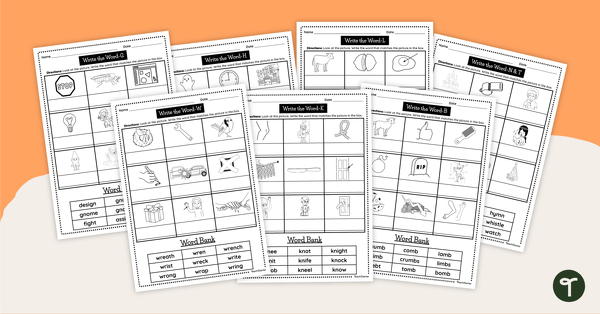
Silent Letters Worksheets - Word and Picture Match Up
Explore silent letters in one- and two-syllable words with this set of 7 targeted worksheets.
- Plus Plan
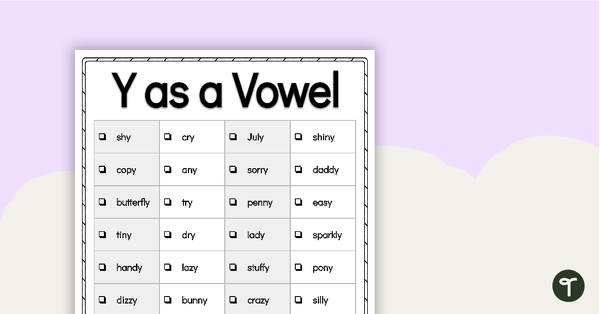
Word Study List - Y as a Vowel
Introduce and explore words containing the letter ‘y’ making a vowel sound with this extensive list of words.
- Plus Plan
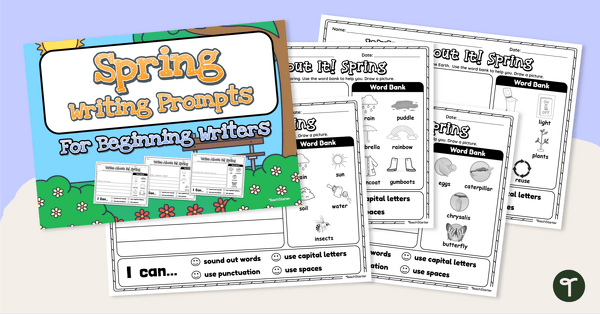
Spring Writing Prompts for Beginning Writers
Use the season of spring to inspire writing in your early years classroom.
- Plus Plan
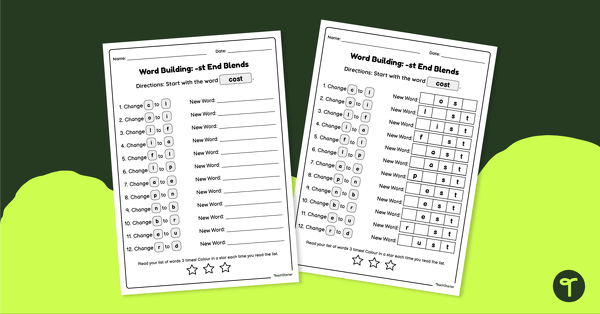
Word Chain Worksheet - End -st Blends
Create word chains by manipulating the individual phonemes in words with this differentiated word-building worksheet.
- Plus Plan

FIND IT! Long and Short Vowels - Task Cards
Practice distinguishing between short vowel sounds and long vowel sounds with this set of 16 task cards.
- Plus Plan
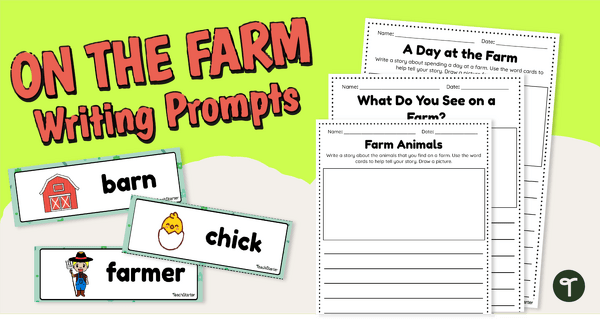
Farm-Themed Flashcards and Writing Prompts
Build vocabulary and writing skills with this ocean-themed writing activity.
- Plus Plan
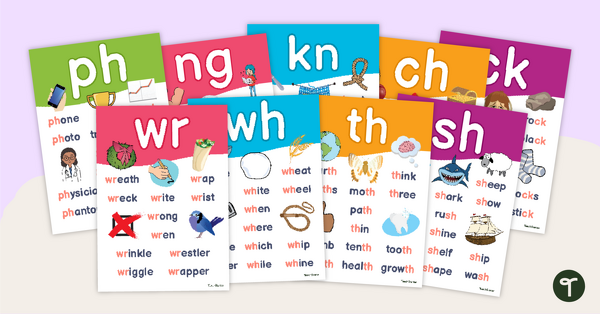
Consonant Digraphs Poster Pack
Expose your students to the most common consonant digraphs with this set of 9 posters.
- Plus Plan
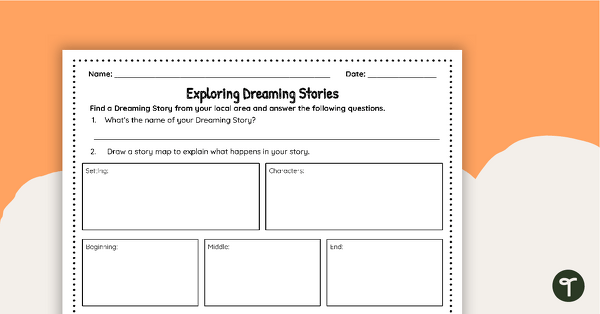
Explore a Dreaming Story – Worksheet
Use this template to explore First Nations’ Dreaming stories and unlock how they connect to Country.
- Plus Plan
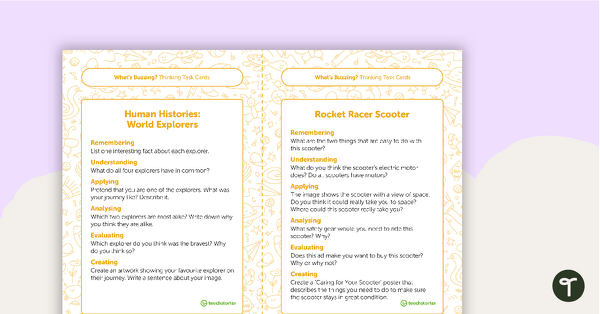
Year 2 Magazine - "What's Buzzing?" (Issue 1) Task Cards
A set of five literacy rotation task cards to be used in conjunction with Issue 1 of Teach Starter's Year 2 magazine.
- Plus Plan
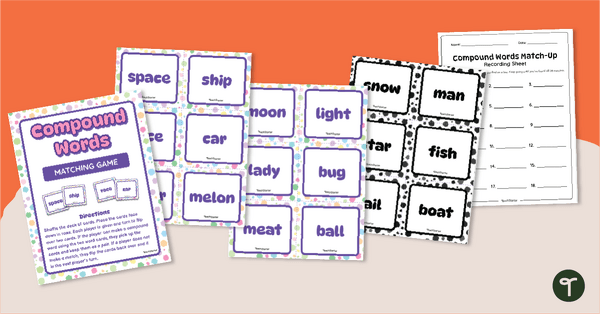
Compound Words Matching Game
Combine words to make compound words with a fun, printable Compound word game.
- Plus Plan
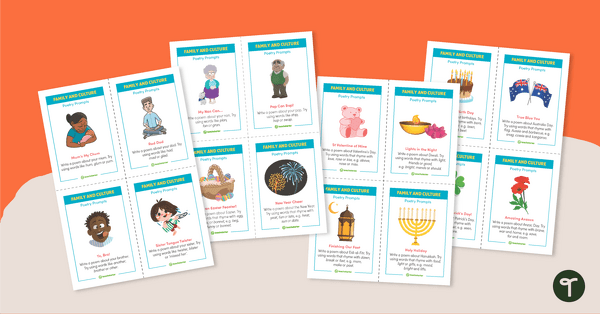
Prompts for Poetry – Family and Culture
A set of 16 illustrated poetry task cards to help students write about their family and cultural celebrations.
- Plus Plan
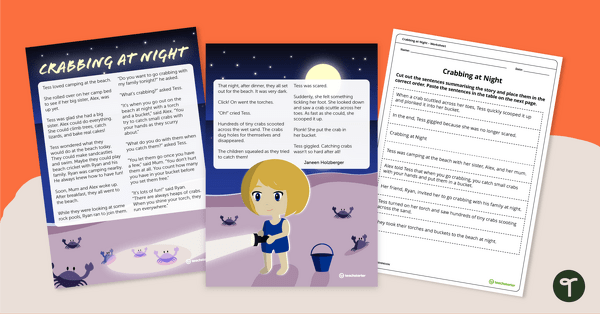
Crabbing at Night - Sequencing Worksheet
Identify the story beginning, series of events and ending with this narrative text sequencing activity.